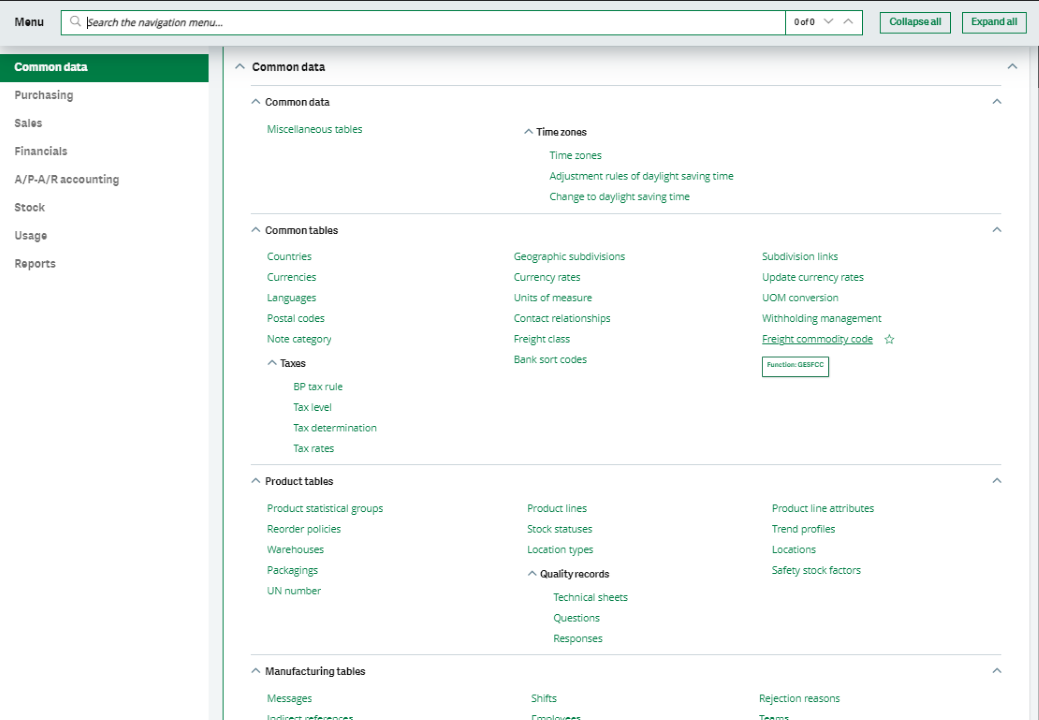
Common Data
This refers to shared information that is used across various modules and functionalities within the system. This data is central to the operation of Sage X3 and includes essential details that are commonly accessed and utilised throughout the application.
Here are some examples of common data in Sage X3:
1. Business Partner Data
Business partner data includes information about customers, suppliers, vendors, and other external entities that your organisation interacts with. This data typically includes contact details, addresses, payment terms, credit limits, and other relevant information.
2. Product Data
Product data encompasses details about the products or services your organisation offers. This includes product codes, descriptions, prices, units of measure, inventory levels, classifications, and any attributes specific to each product.
3. Chart of Accounts
The chart of accounts is a key component of common data in Sage X3. It defines the structure of your organisation’s financial accounts, including general ledger accounts, cost centres, profit centres, and other accounting elements used for financial reporting and analysis.
4. Tax Codes and Rates
Common data in Sage X3 includes tax codes and rates applicable to your business operations. This data defines how taxes are calculated and applied to sales, purchases, and other financial transactions based on regional tax regulations.
5. Currency Configuration
Currency configuration includes settings related to multiple currencies used in transactions. This data defines exchange rates, currency codes, decimal precision, and other parameters for handling transactions in different currencies.
6. Price Lists
Price lists contain pricing information for products or services offered by your organisation. These lists define standard prices, discounts, promotions, and pricing tiers based on customer segments, quantities, or contract terms.
7. User Permissions and Roles
Common data in Sage X3 also includes user permissions, roles, and access rights within the system. This data defines which users can access specific modules, functions, data sets, and perform certain actions based on their roles and responsibilities.
8. Workflow Configuration
Workflow configuration data includes settings related to business processes, approvals, notifications, and escalations within Sage X3. This data defines workflow steps, conditions, routing rules, and approval hierarchies for various processes such as purchase approvals, sales order processing, and expense management.
9. Bank and Payment Details
Bank and payment details encompass information about bank accounts, payment methods, payment terms, and banking transactions within Sage X3. This data is used for processing payments, reconciling accounts, and managing financial transactions.
10. Reporting Structures
Reporting structures define how data is organised and presented in reports, dashboards, and analytics within Sage X3. This includes setting up reporting hierarchies, dimensions, analysis codes, and customised reporting templates for financial and operational reporting.

